Citroën Oli — Radical, Revolutionary, Thought Provoking

Citroën shocked the world on Thursday with their interpretation of a small eco-friendly SUV they say contains the DNA for what will appear in future Citroën production models.
The Oli Concept is billed as a “radical, responsible” approach to offering affordable electric cars, featuring sustainable materials, light weight and simple construction.
Citroën estimates that if put into production the street price of the pure-electric mini pick-up would be under €25,000.
The Oli name (pronounced “all e,” as in electric) is meant to refer to the Ami electric, but as Citroën CEO Vincent Cobée pointed out;
“Unlike that car, which evoked the small Ami-6 (2CV variant from the 1960s), the Oli does not refer to past Citroën models. It's not a retro design, it's affirming our values towards the future. We started looking at creating the Oli two and a half years ago. We said, Ok, how do we do something which is ingrained into respect for the environment, extremely capable and electric?”The Oli’s unusual shape reflects Cobée and design chief Pierre Leclercq’s belief that “form follows function.”
While some might see a hint of the early 2000 era Pontiac Astek’s controversial exterior shape, or perhaps GM’s Hummer H2, the Oli makes virtually any SUV attempt that has come before it blandly conservative.

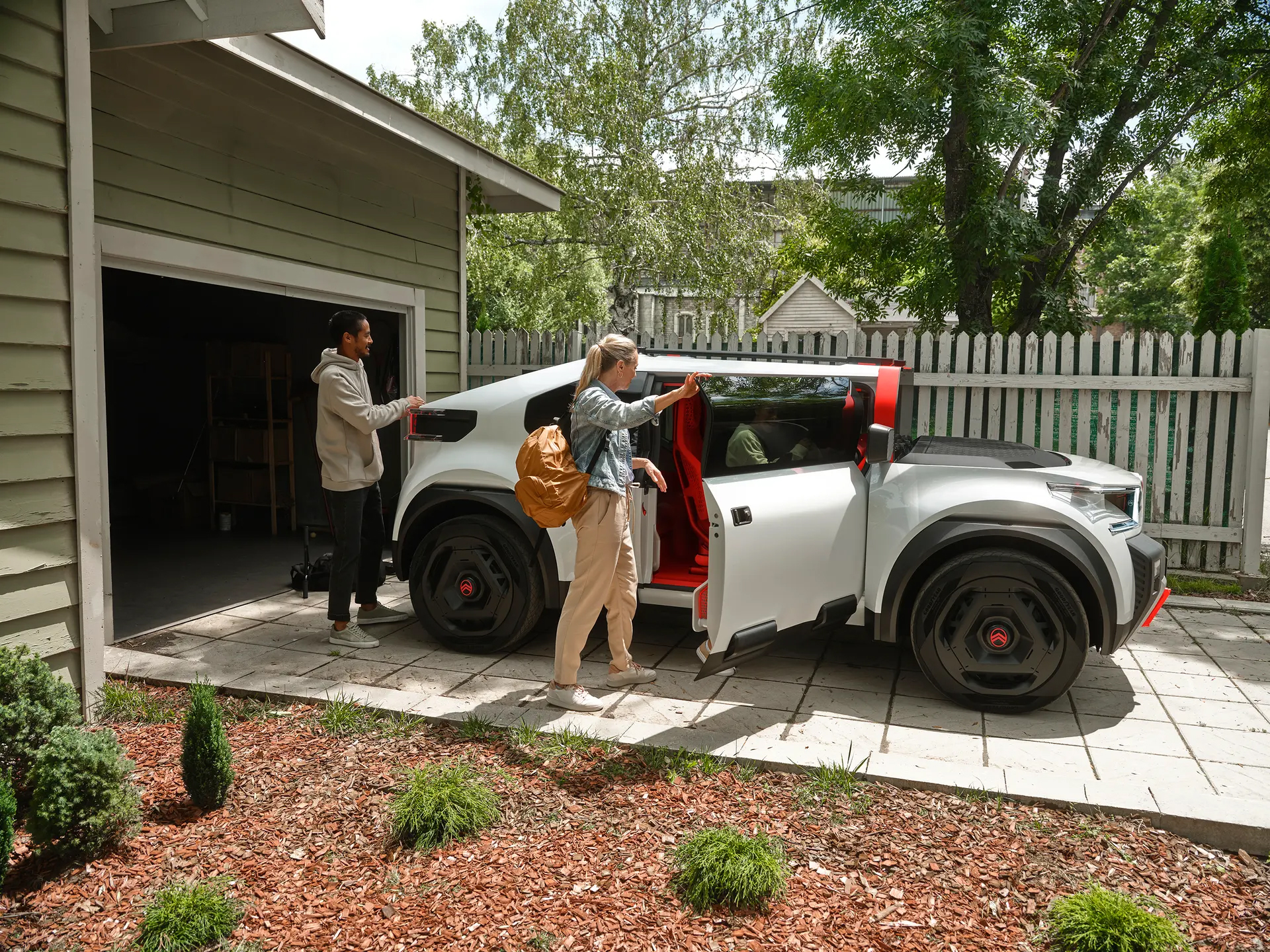
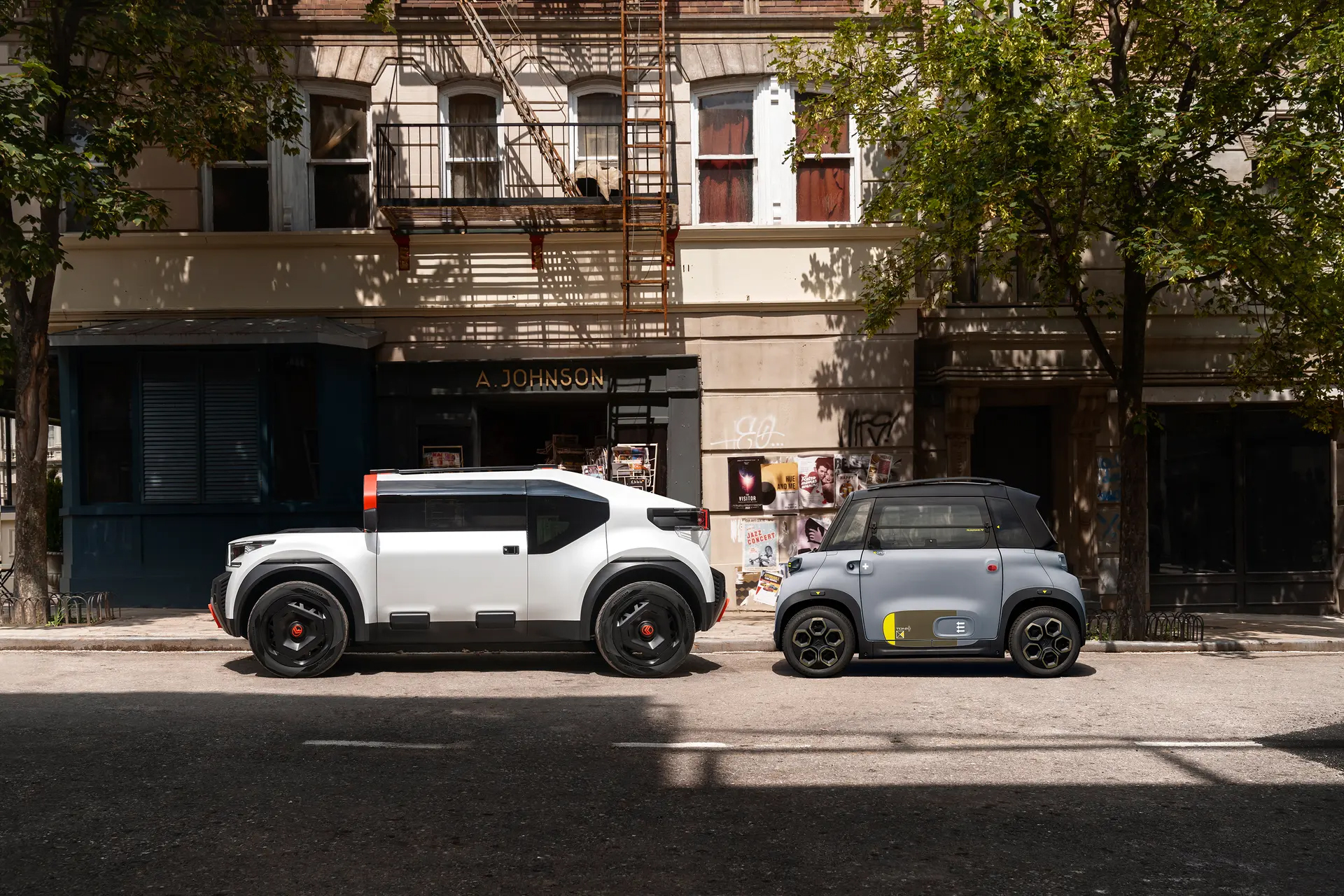
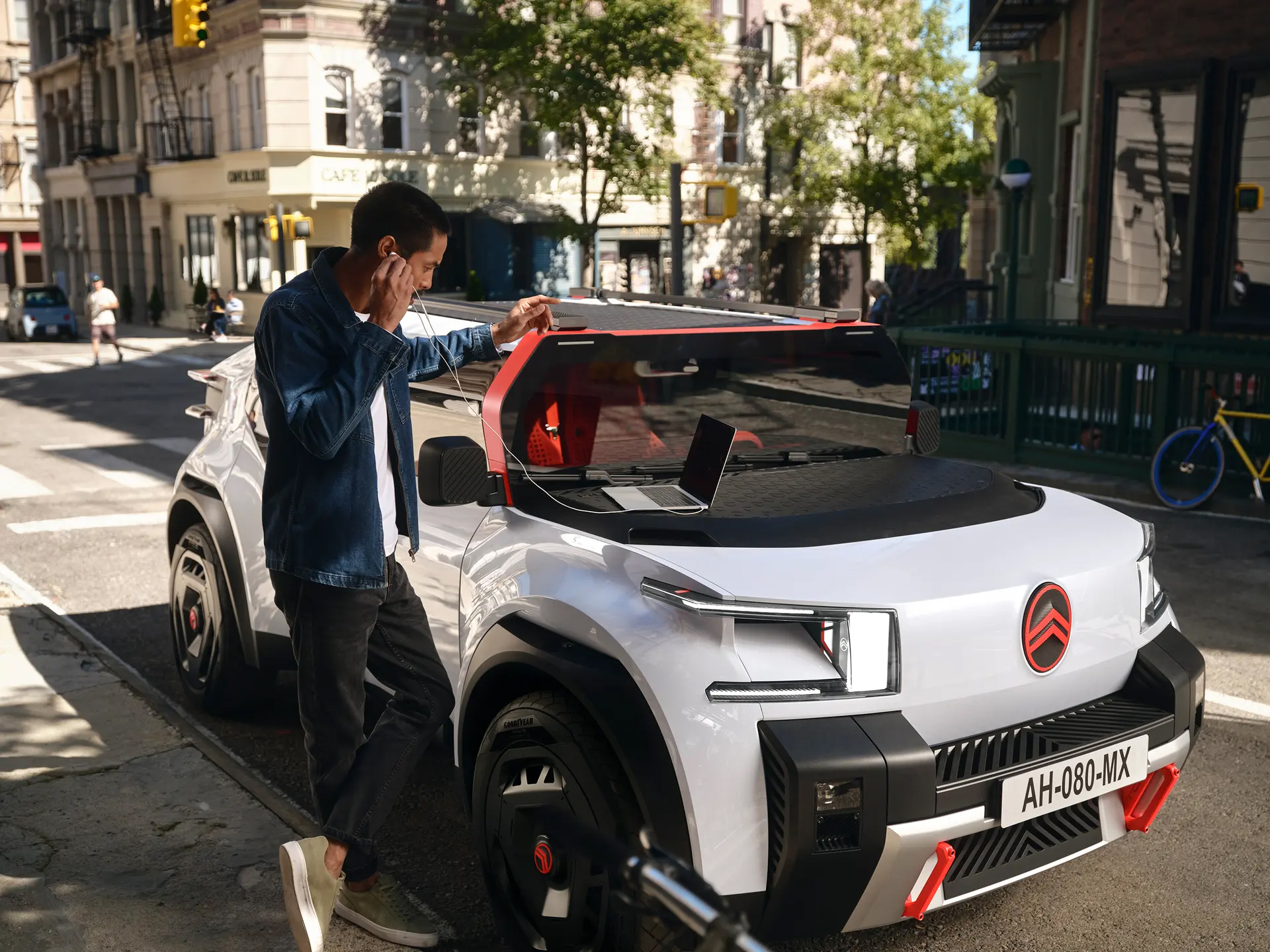
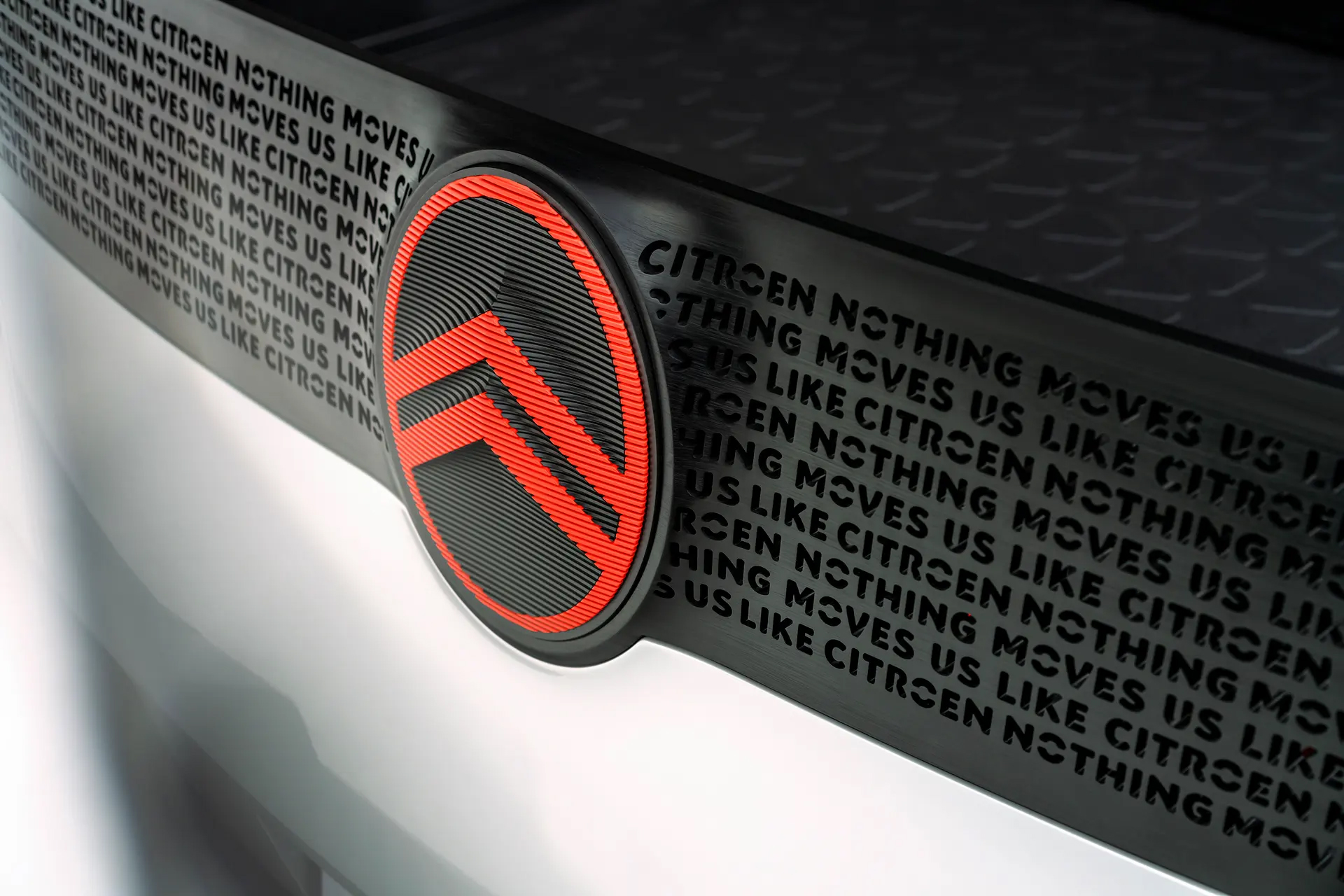
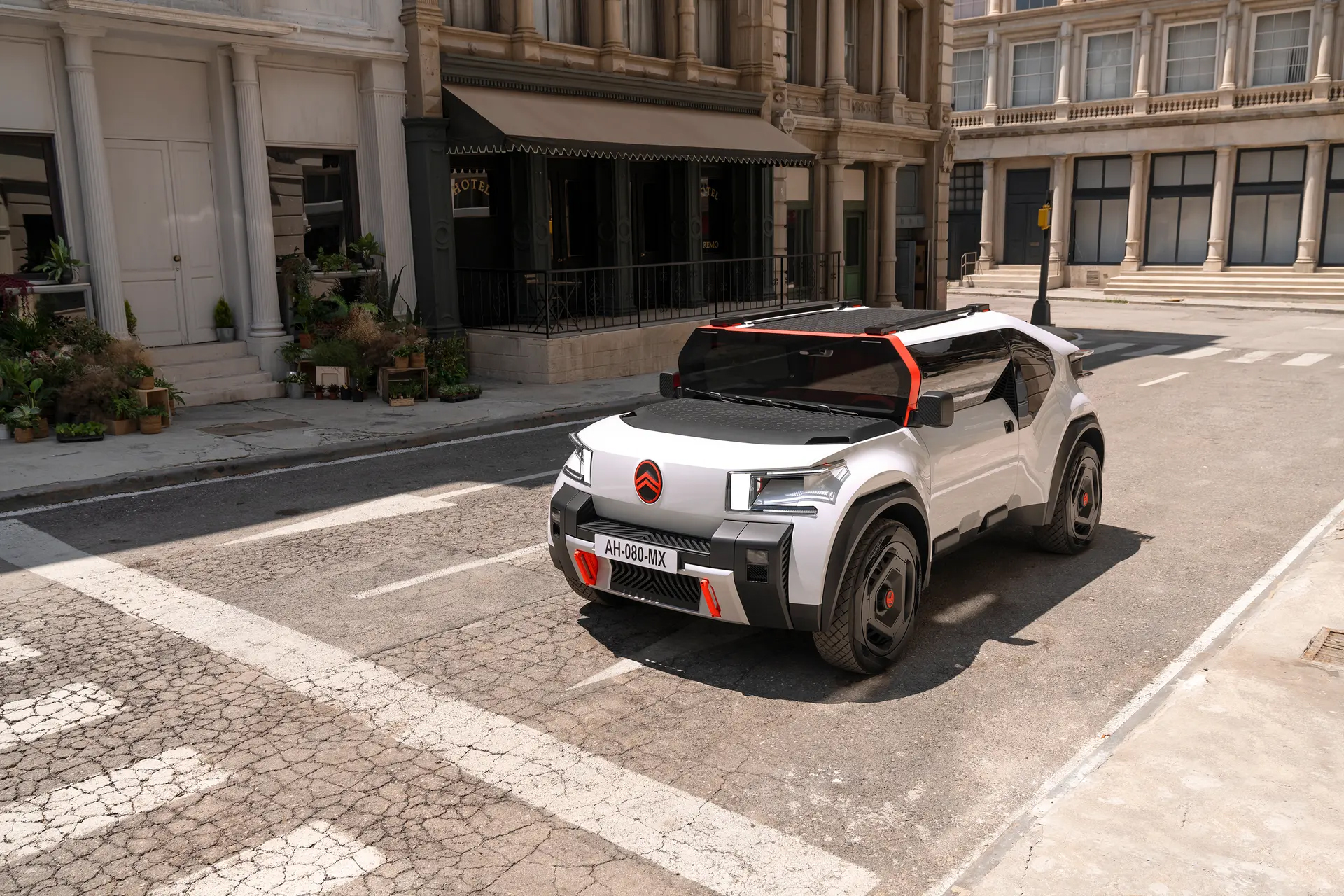
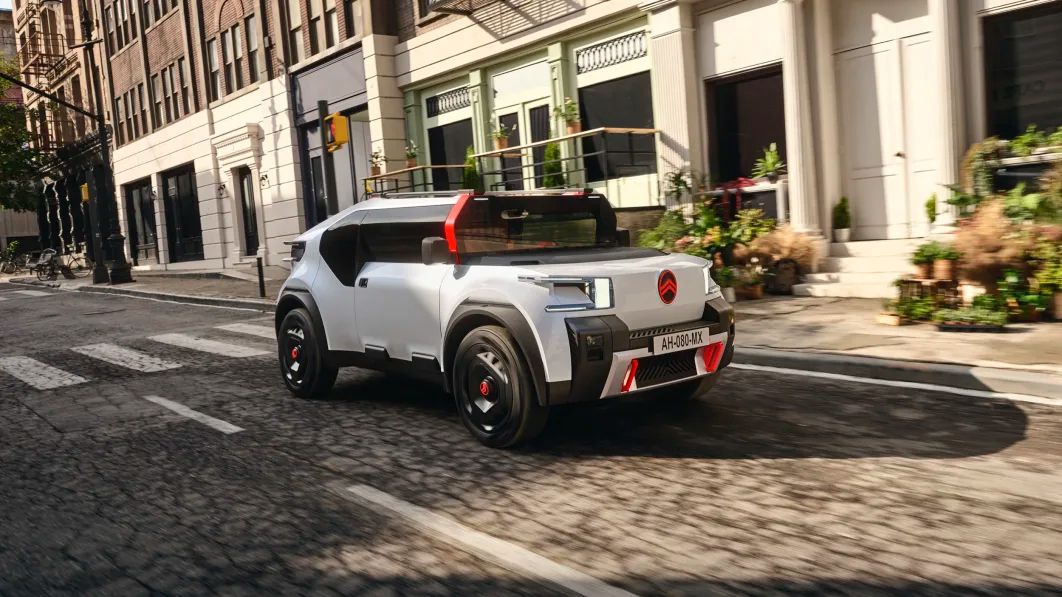
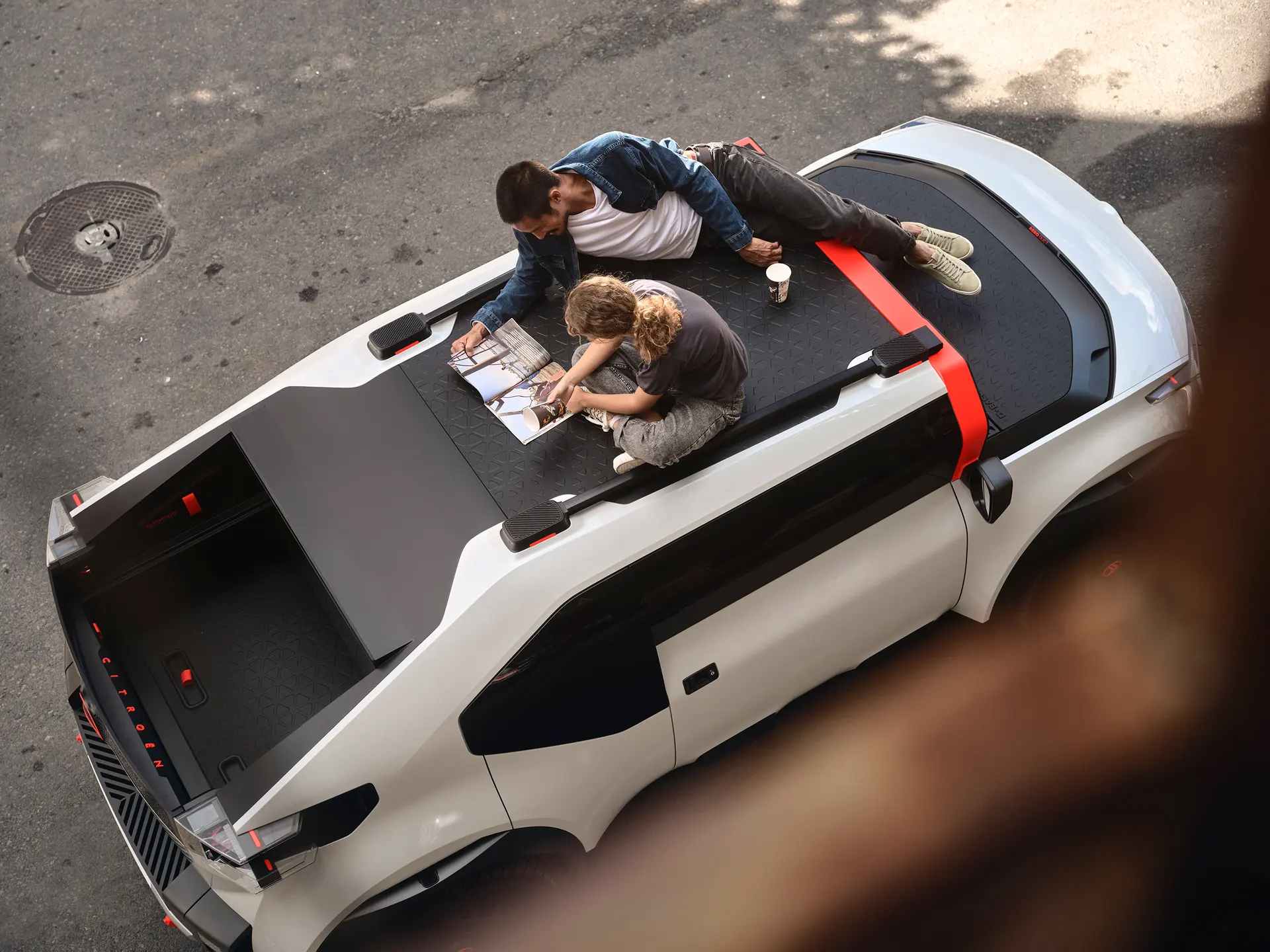

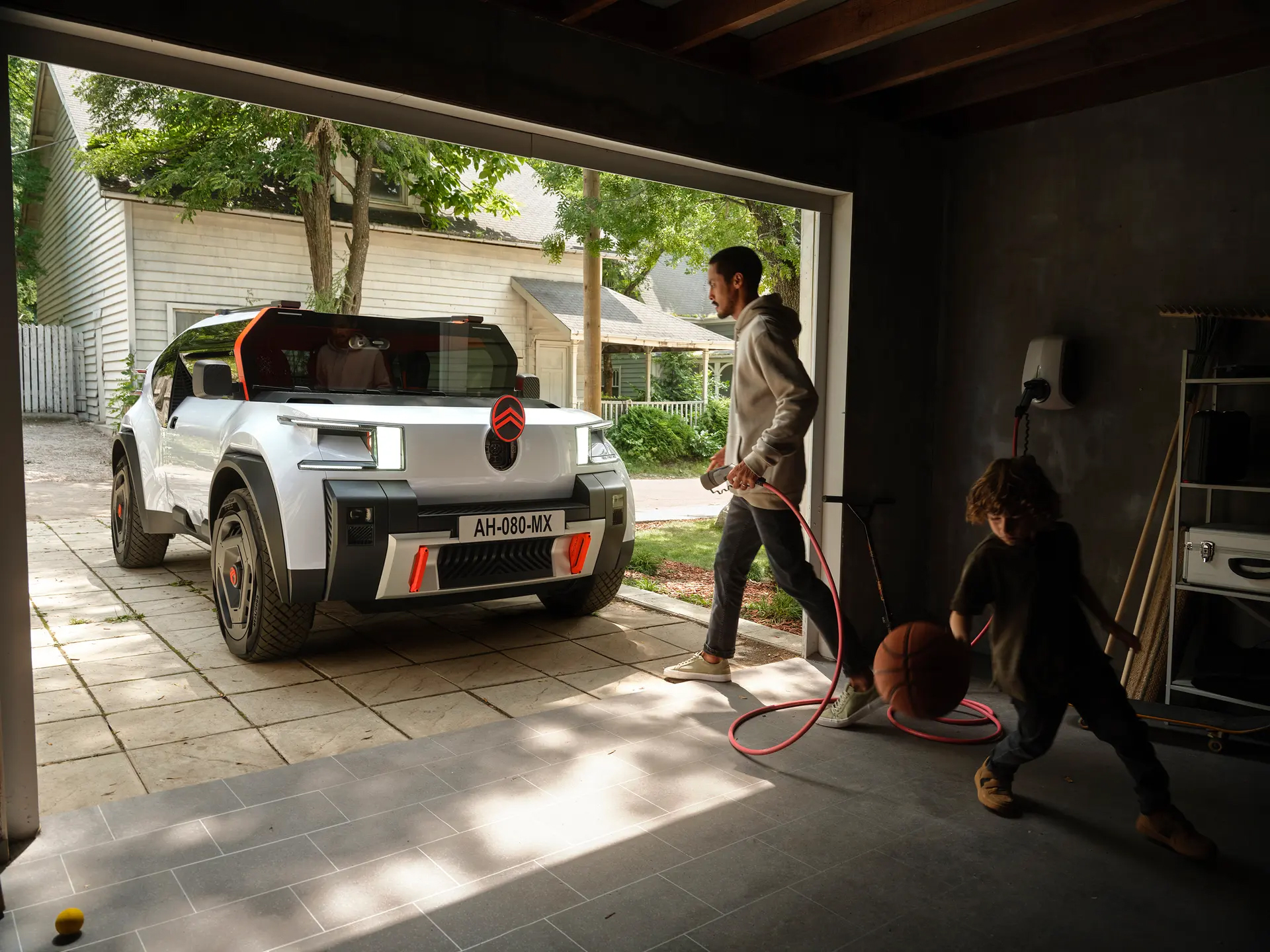

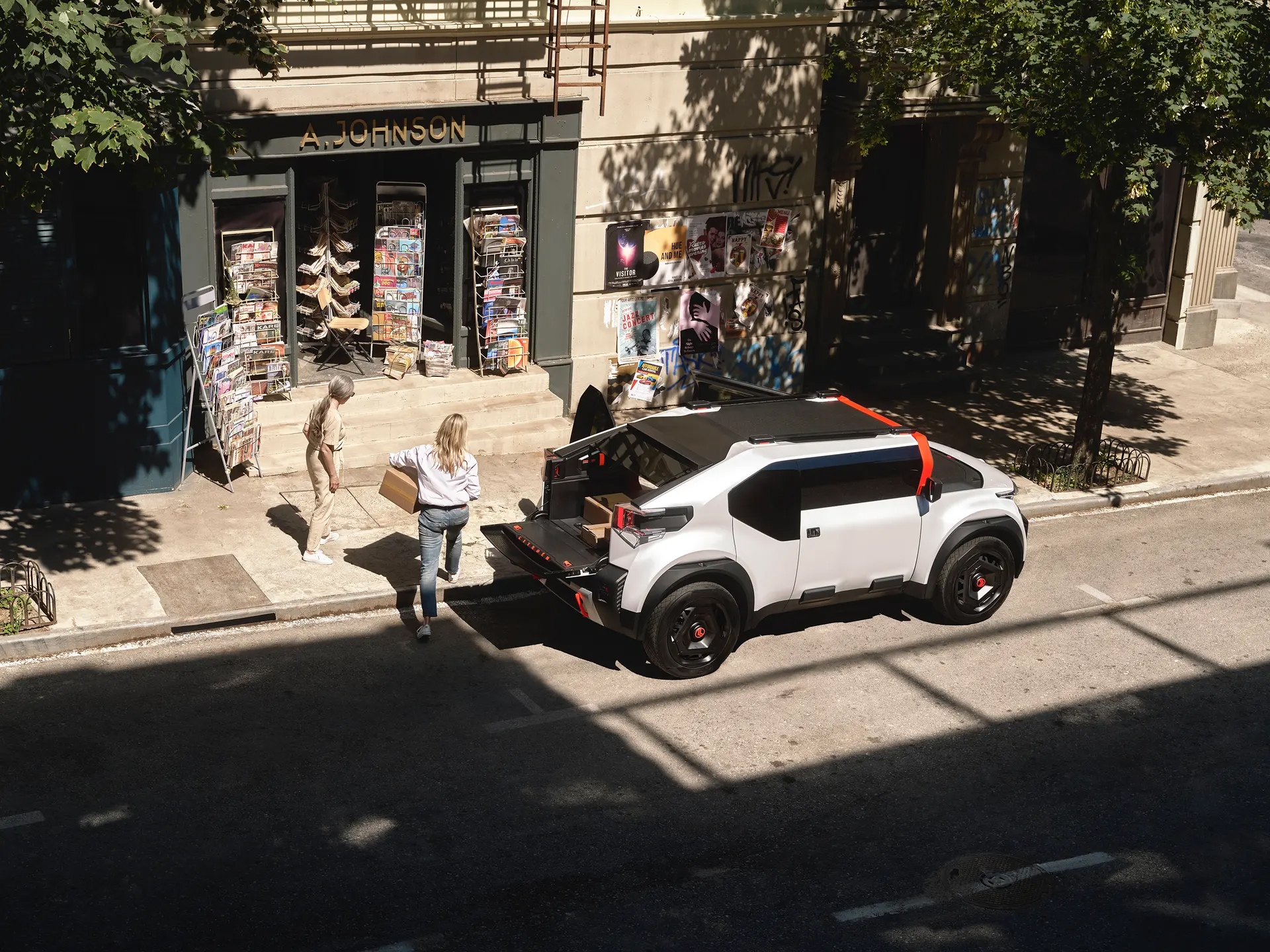

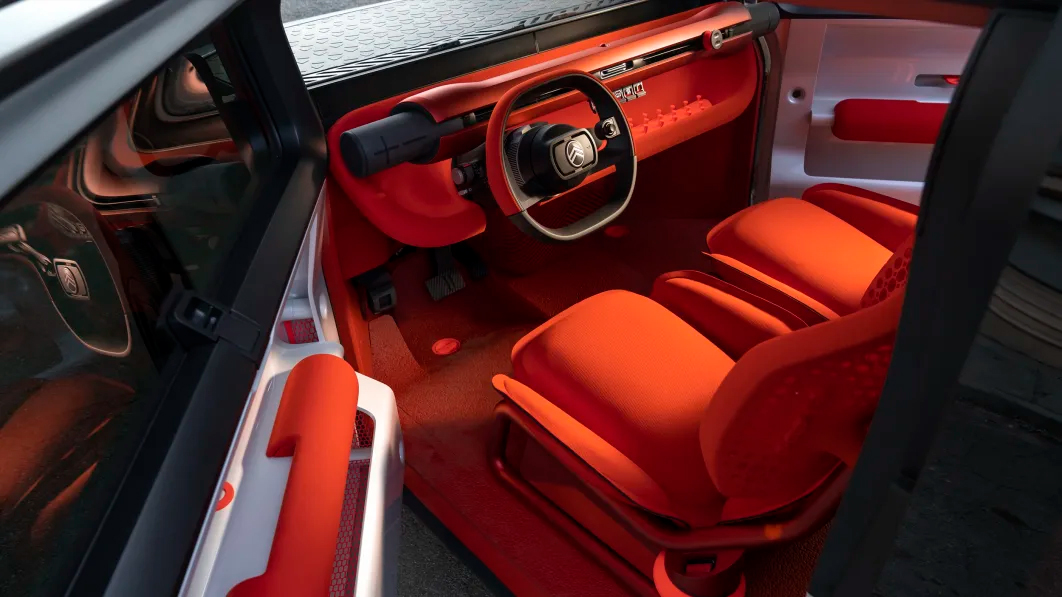

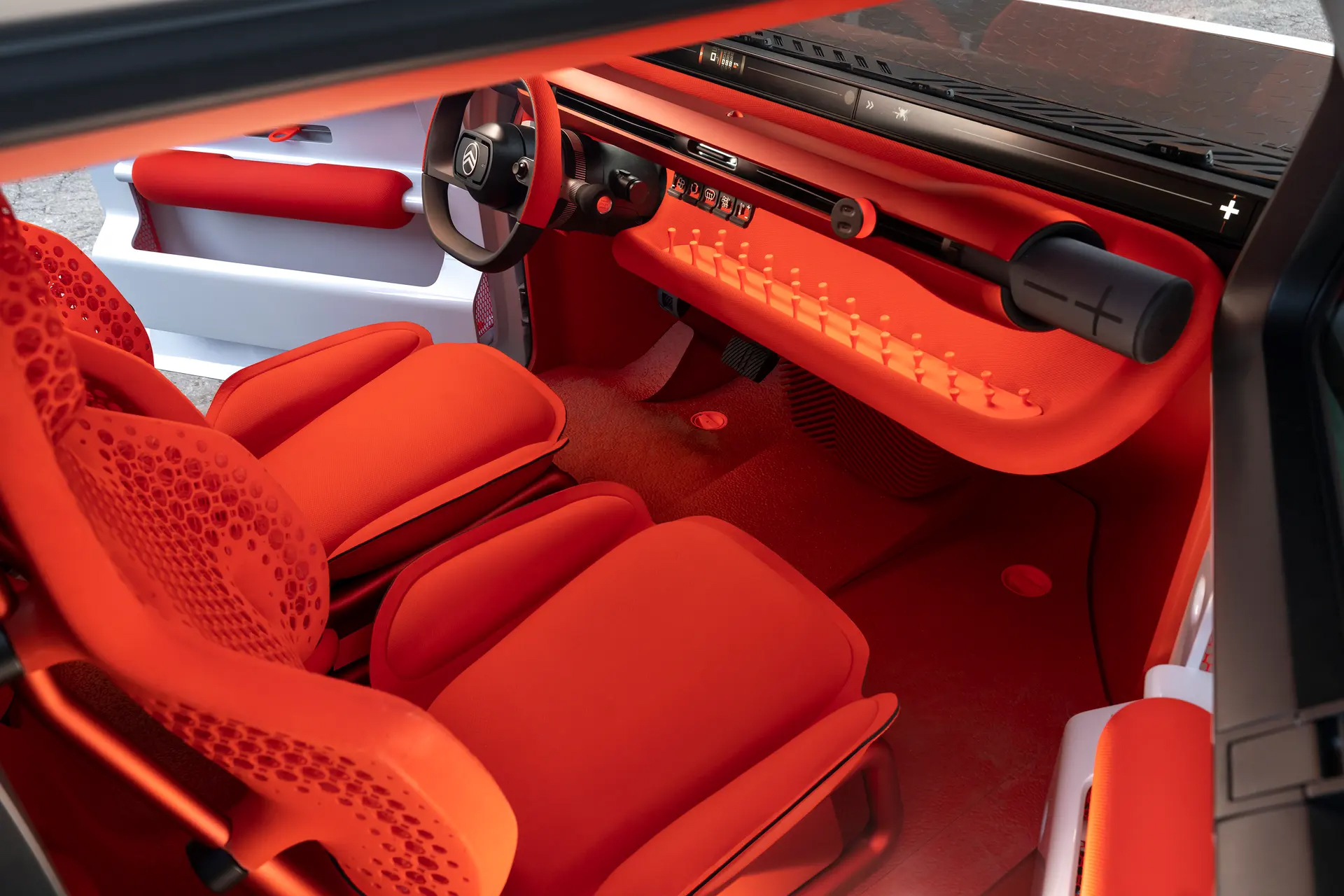
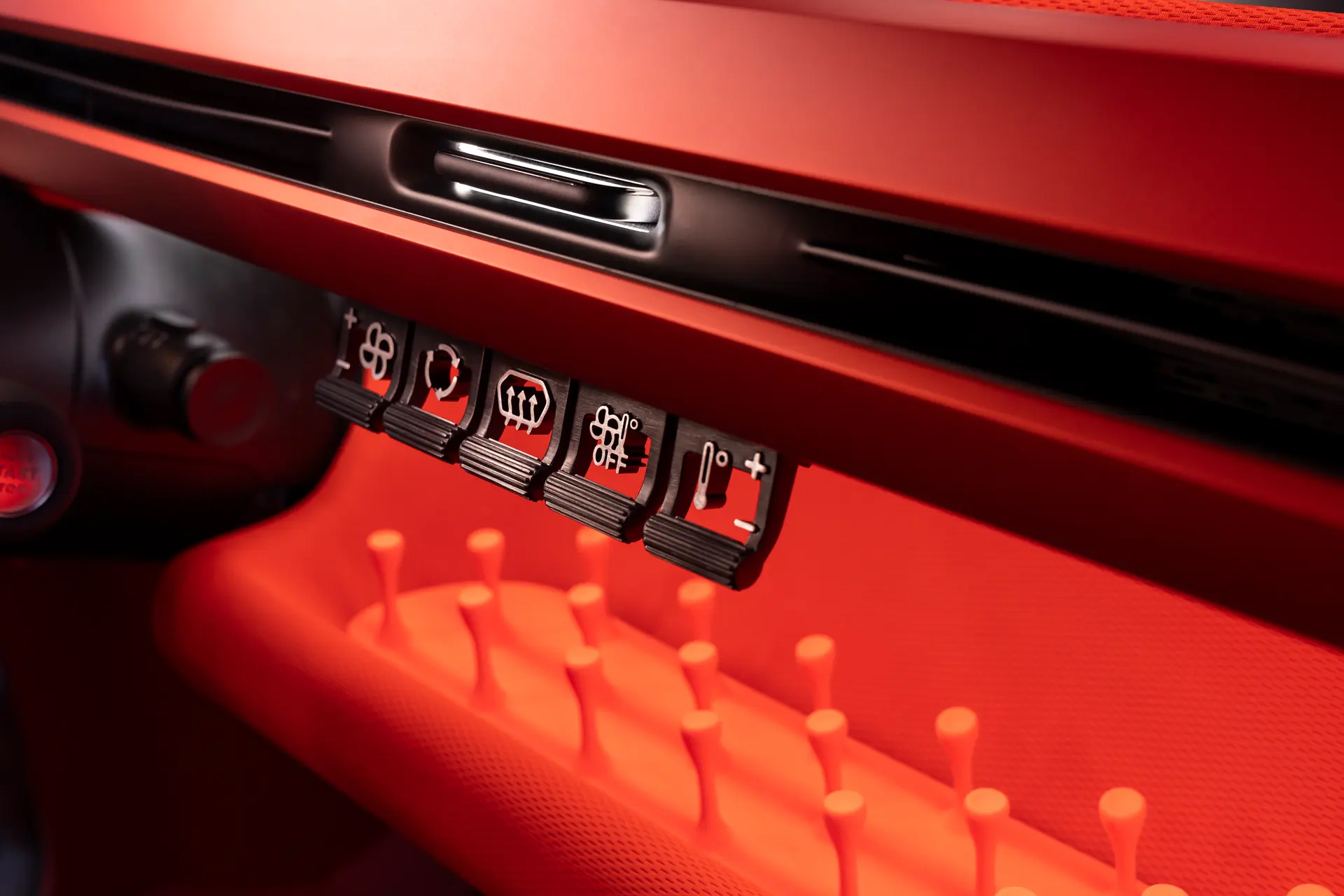

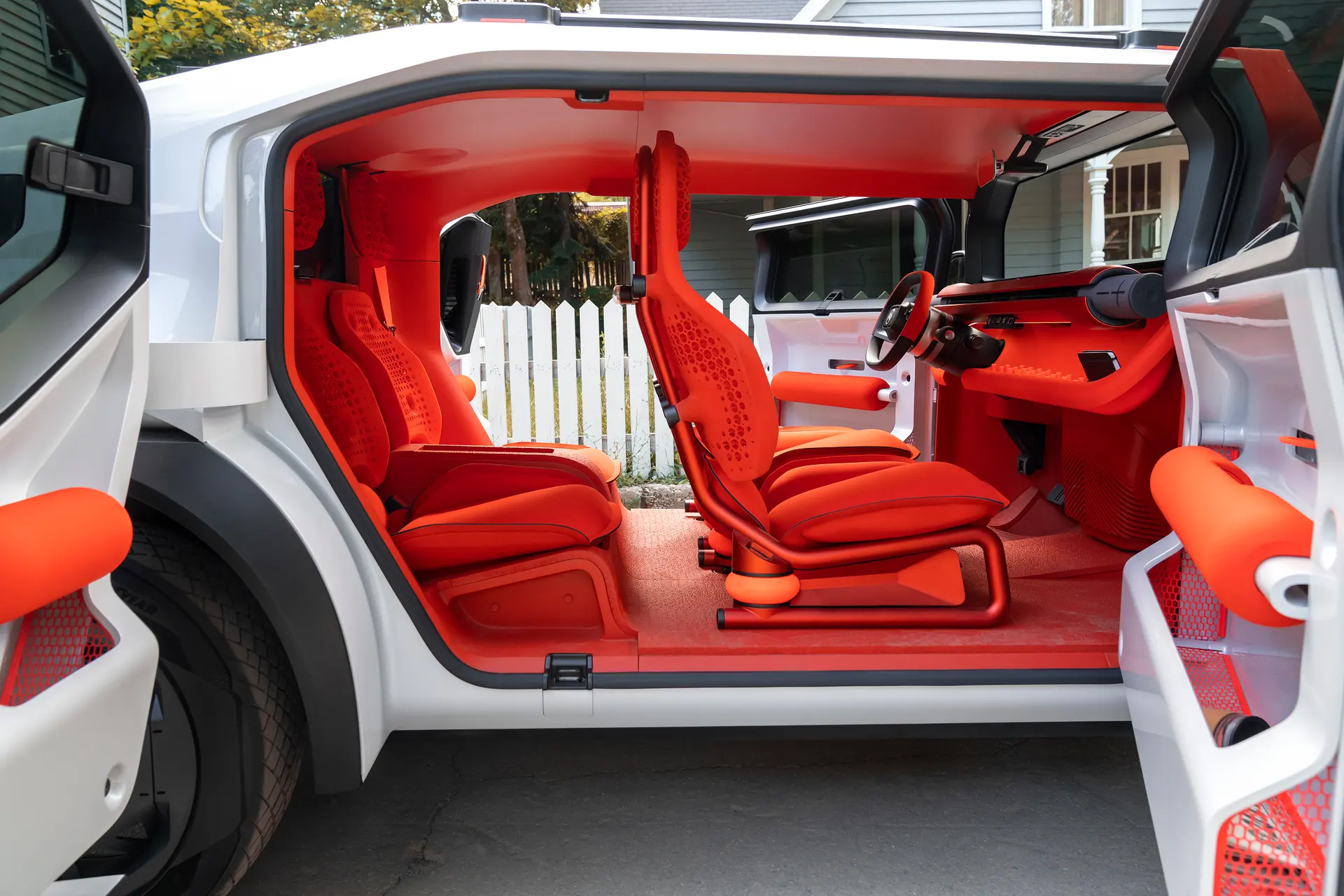

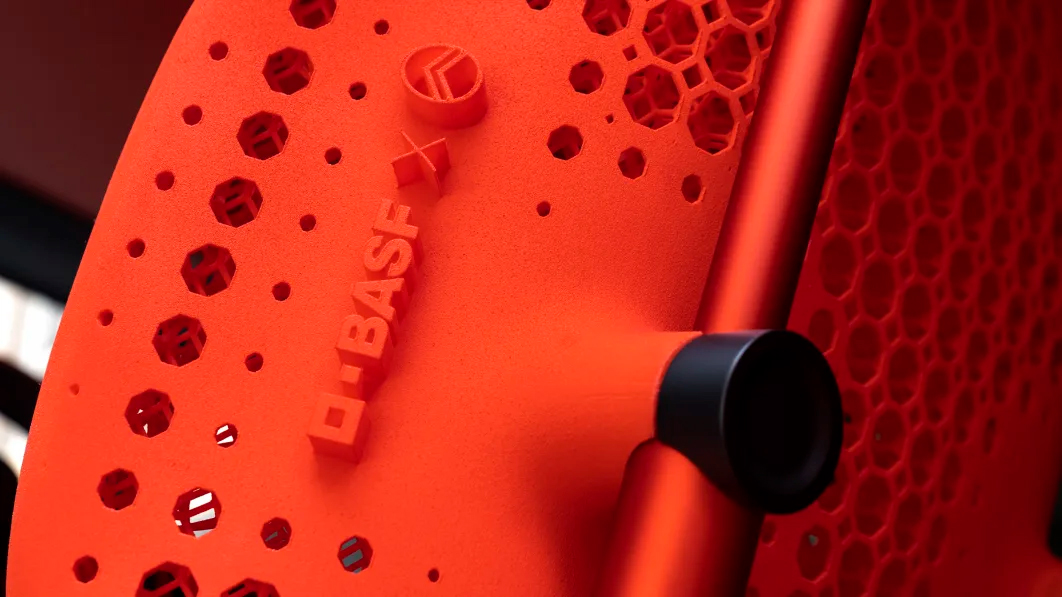
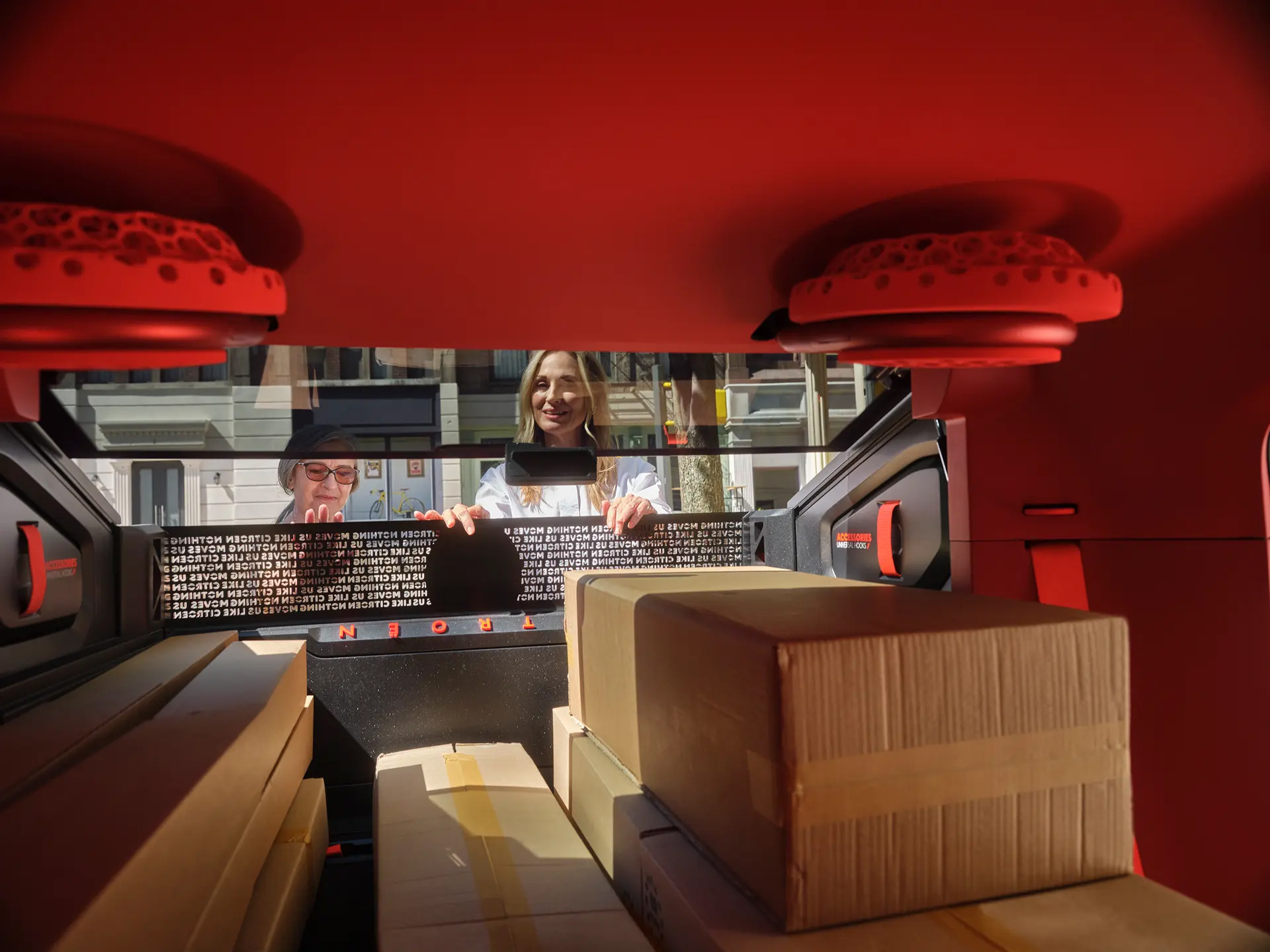
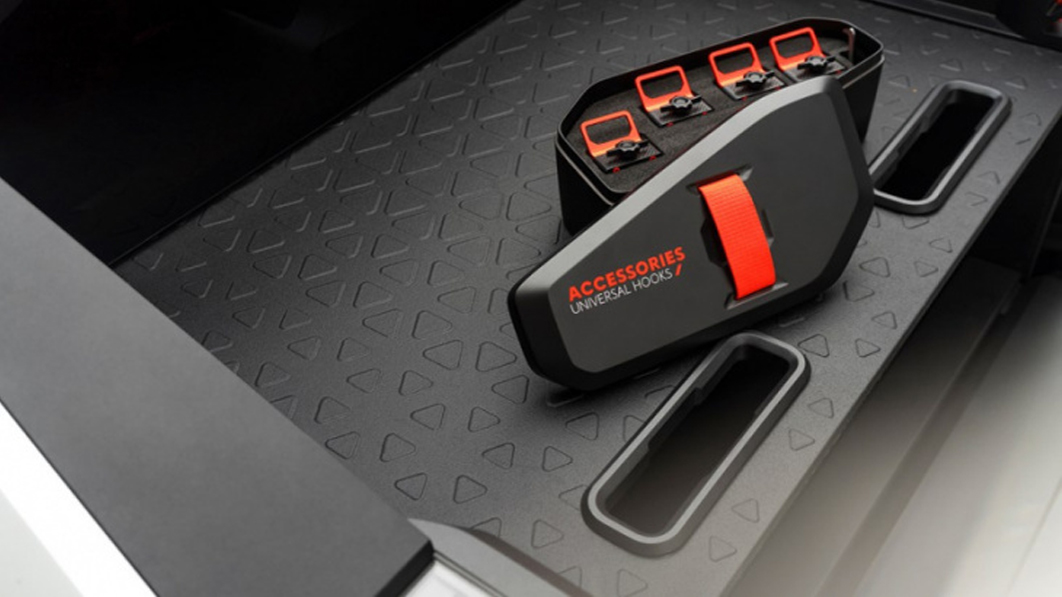
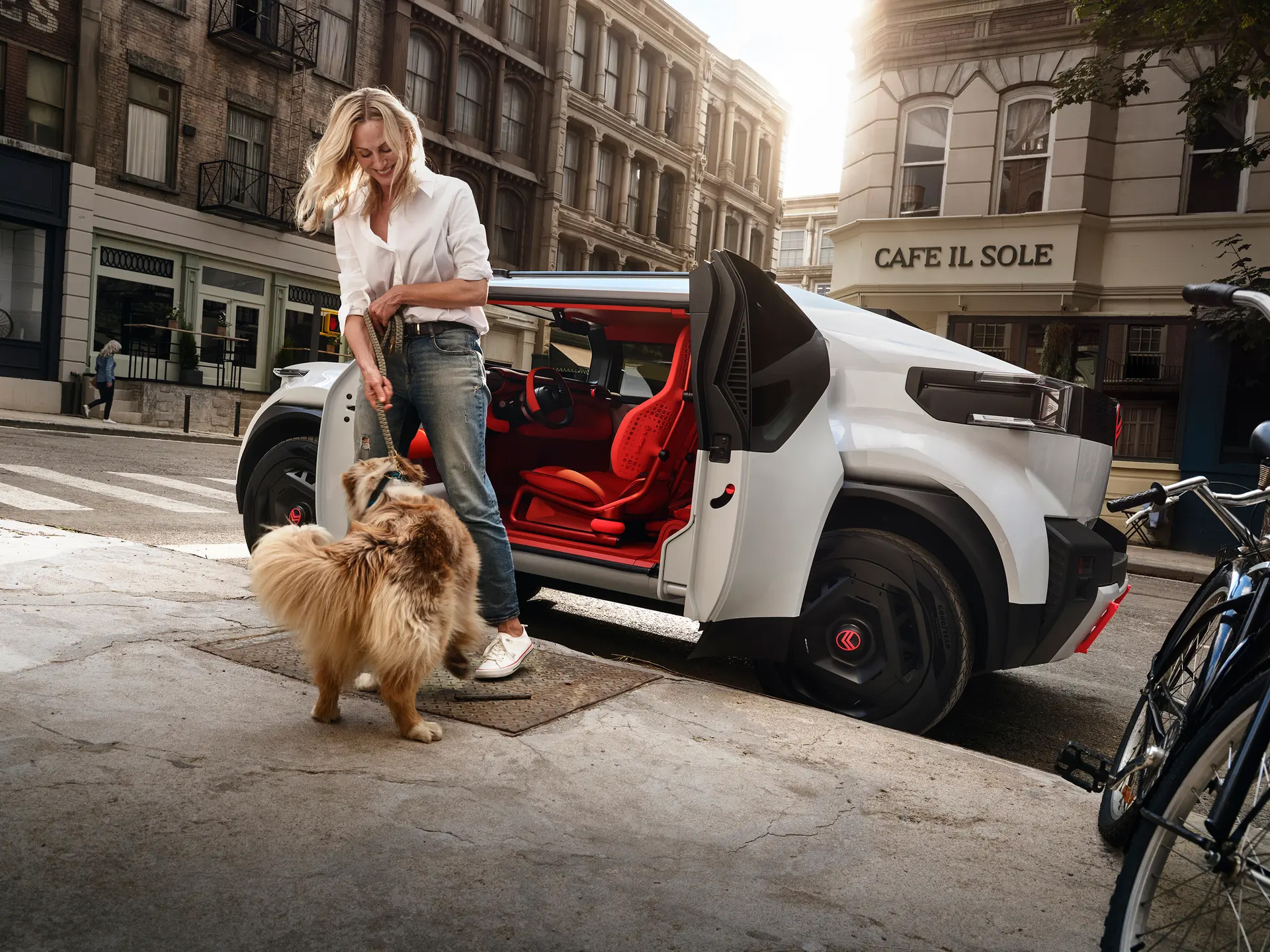
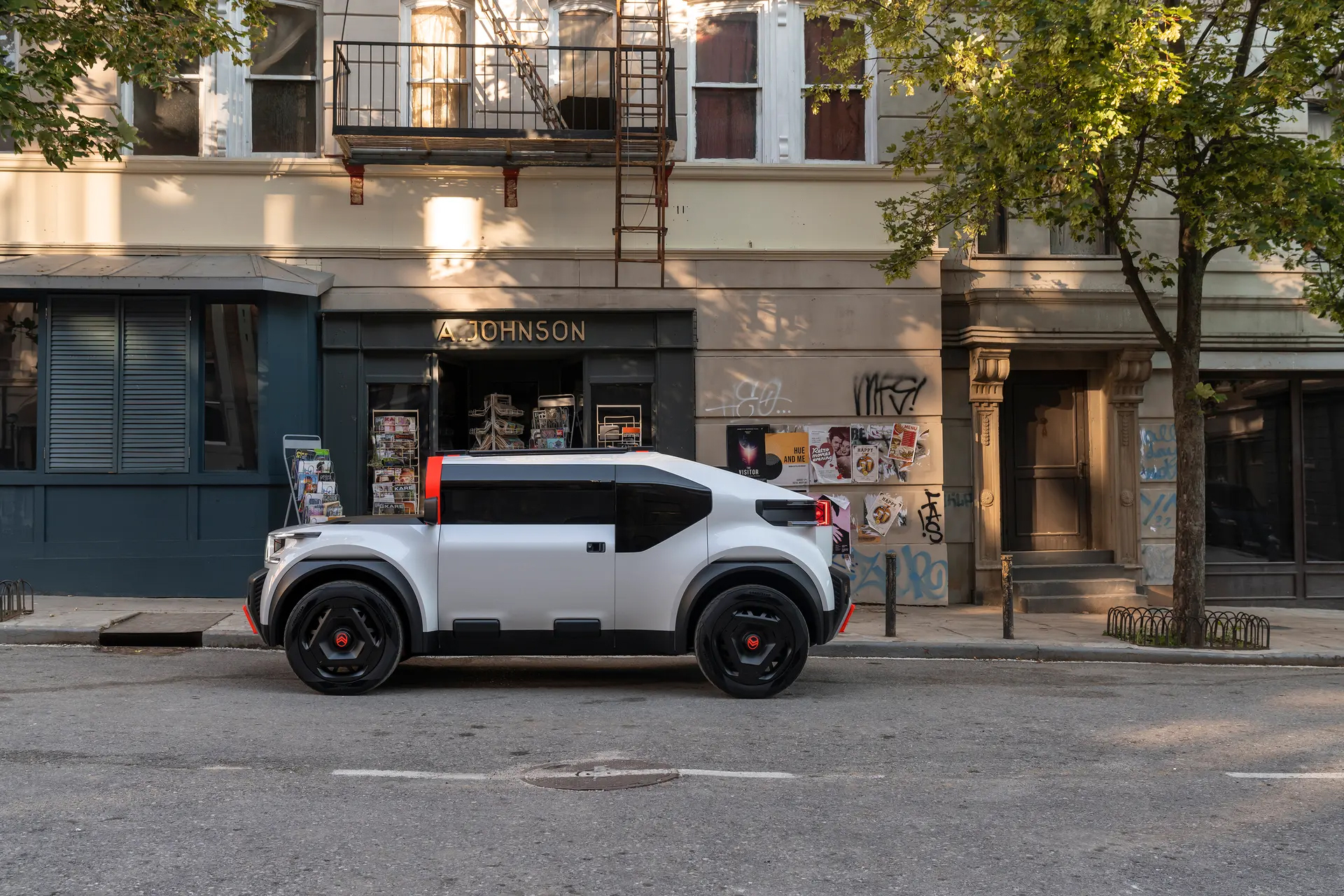
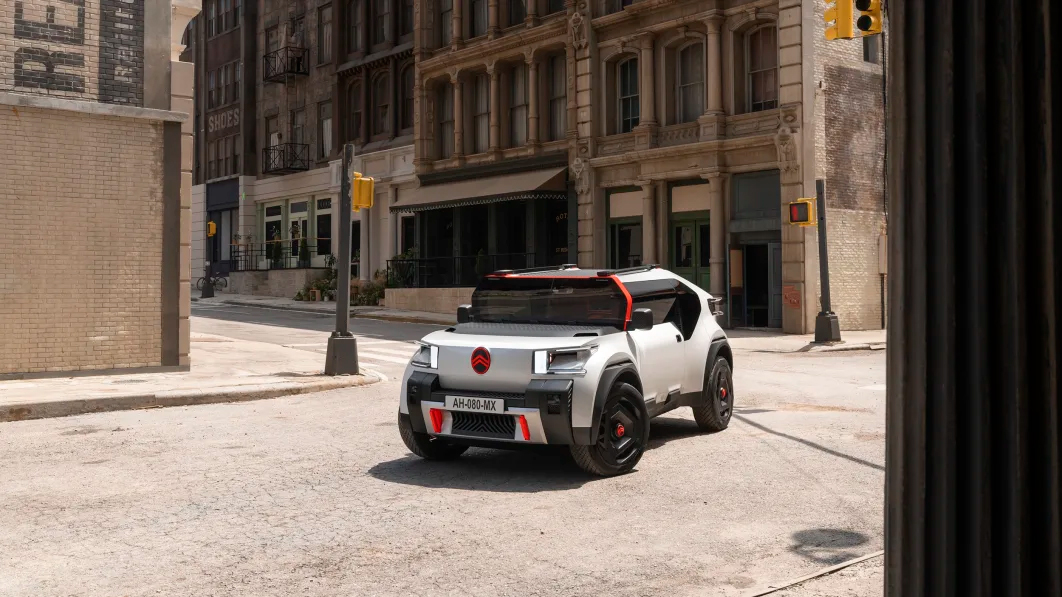
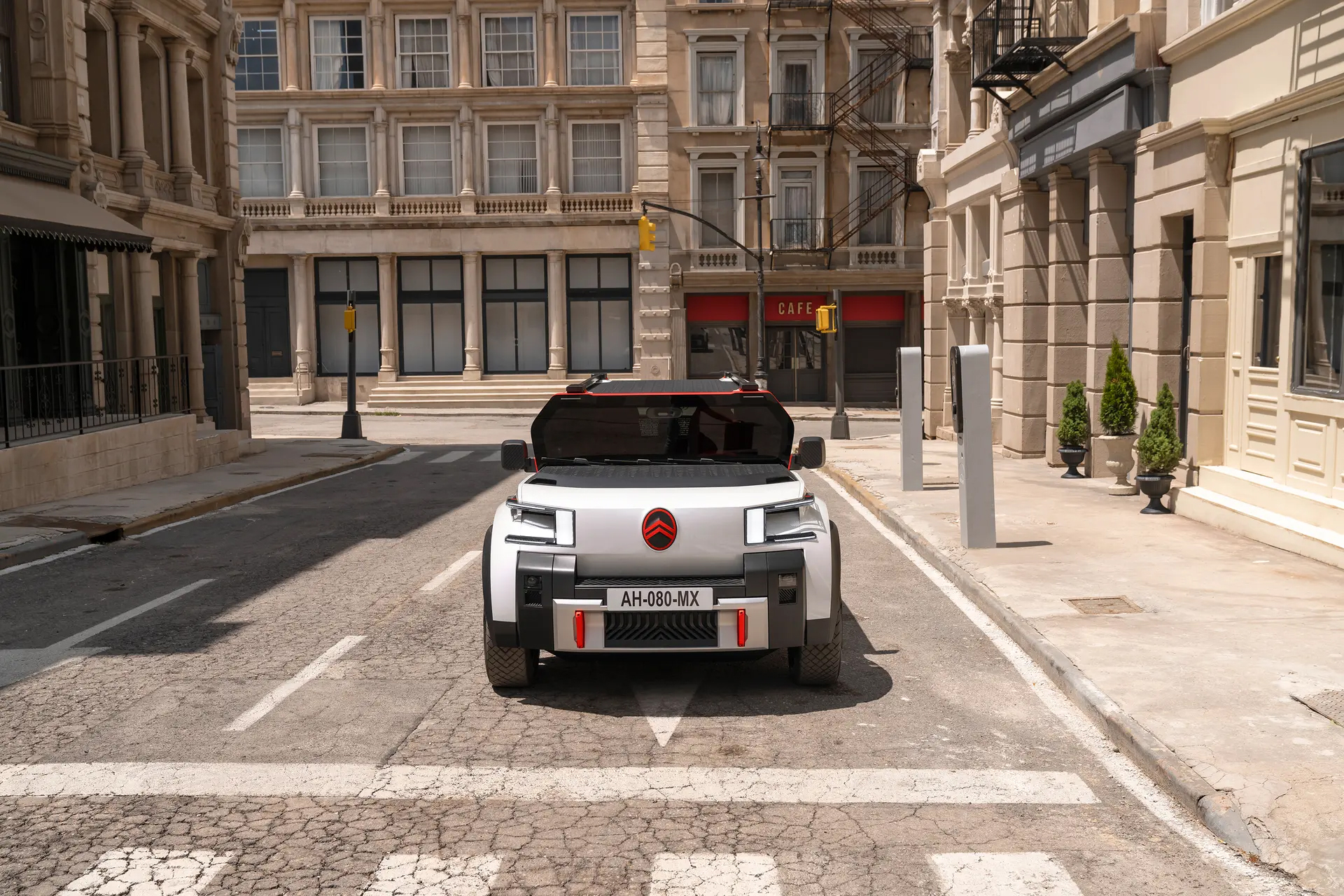






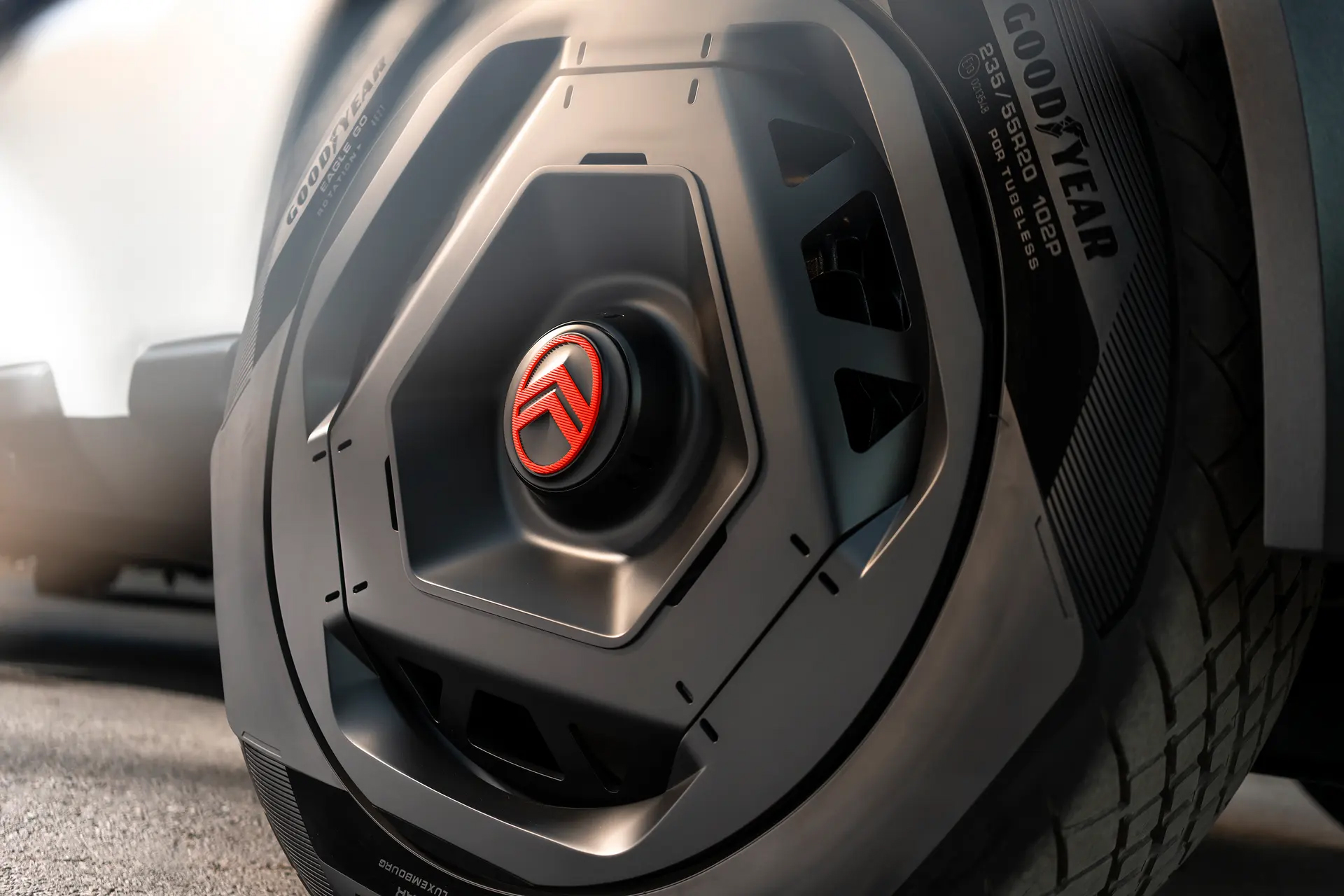
Perhaps the most notable design element is the flat windshield, reminiscent of the 2CV. Traction Avant and earlier era Citroëns. which allows for less material and a cheaper, simpler production process. Because the Oli is a concept showing an application for urban use, aerodynamics are less of a concern though Citroën designers have incorporated an “Aero Duct” system at the leading edge of the hood to direct air above the roof to create a “curtain” effect.
Some of the Oli’s exterior panels are interchangeable with each other, including identical left and right front doors (mounted in the opposite orientation, bumpers (formed from polypropylene plastic containing 50% recycled materials), and recyclable plastic wheel arch extensions, all helping to reduce manufacturing and repair costs.
Certain non-structural elements of the body, such as the flat roof, rear deck and hood are made from resin-covered honeycomb cardboard panels then covered in a protective layer of a “tough, textured” product called Elastocoat that’s often used in parking garage construction, and finally painted. They present a 50 per cent weight saving over steel, while still being strong enough to support the weight of an adult.
The beam-style dashboard is fitted with a row of physical toggles for the climate controls while infotainment duties are relegated to a slim dashboard display, driven by the user’s smartphone. Two removable Bluetooth speakers sit at either end of the dashboard.
The tubular-frame seats, which Citroën says use 80 percent fewer parts than a conventional seat, are equipped with flexible thermoplastic mounts for extra comfort are made of 3D-printed recycled polyurethane (which is molded like a sneaker sole) from BASF to eliminate waste and save weight. Floor materials are also polyurethane to reduce material diversity and aid in recycling.
Oli’s 20-inch wheels combine a strong steel face with an aluminium inner rim to save 6kg in total. Even more revolutionary for Citroën, we note there are no Michelin tires present! Instead, Goodyear Eagle GO tires are fitted that use a tread partly made from sustainable materials including natural rubbler, sunflower oil, rice husks and pine resin. Like tires on heavy-duty trucks, the Eagle GO can be recapped with a new tread several times, giving them a lifespan of up to 500,000 kms.
Thanks to the use of lightweight recycled materials, simplified tech and a relatively small 40kWh battery (with consumption of 10 kilowatt-hours per 100 km) Citroën has achieved a target weight of 1,000 kg (2,200 lbs) and a range of 400 km (250 miles) for efficiency that is “best in class”. Top speed is limited to 110 kph (70 mph). Charging the battery from 20 to 80 per cent takes just 23 minutes. (These figures are presumably derived from Stellantis’ STLA Small platform, which likely underpins the Oli.)
Power use is a key Oli feature. It offers Vehicle to Grid (V2G) and Vehicle to Load (V2L), meaning it can be used as a home energy storage device, storing electrical power when it is abundant (V2G) and making it available during peak demand when there might be diminished wind or solar energy available, or you can plug a range of appliances into the car’s charging port via a special adaptor and run them from the stored charge in the battery using the car’s V2L capability. Citroën is pitching the Oli as being versatile for outdoor adventures. It is equipped with roof rails, attachment points for accessories and a pick-up-style load bay.
Though the Oli is only an “idea lab” for the brand’s future, Citroën CEO Vincent Cobée says; “If it comes across in a polarizing way, that’s fine. The point of a concept car is to make you think. We want to make a statement about affordable, responsible electric cars that exude freedom.”
This video shows the thought and process Citroën applied to achieve the Oli objective:

Coinciding with the launch of the new Citroën brand logo this week, Cobée said:
“As we embark on probably the most exciting chapter in our illustrious 103-year history, the time is right for Citroën to adopt a modern and contemporary new look. Our new identity is an elegant symbol of progress as we move our customers physically in daring, forward-looking vehicles that challenge traditional industry rules, and emotionally by ensuring their entire experience – particularly going electric – is more affordable, comfortable, and enjoyable whatever their wants and needs.”Here is more footage of the Oli Concept in motion:

The Oli Concept certainly shows that Citroën is out there leading the way toward a new means of mobility in the 21st century.

The idea of creating an airstream over the windshield harks back to the aerodynamic experiments André Lefebvre conducted with the Coccinelle.
Hi. I hope such a neat car might come to the North American market soon.